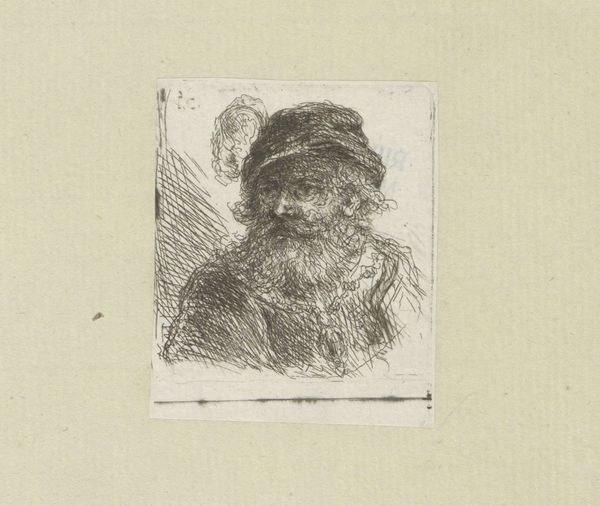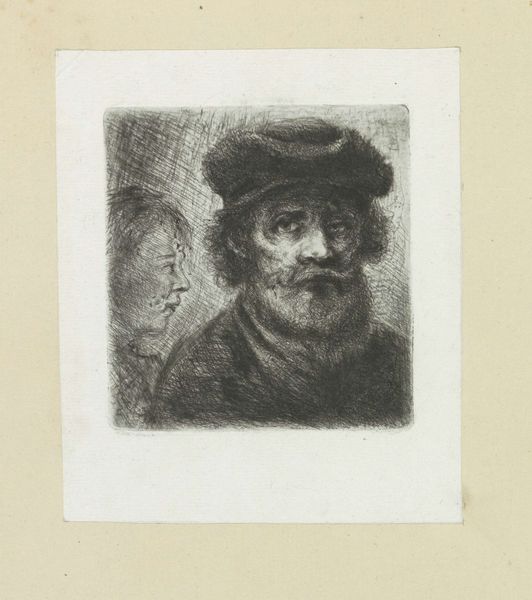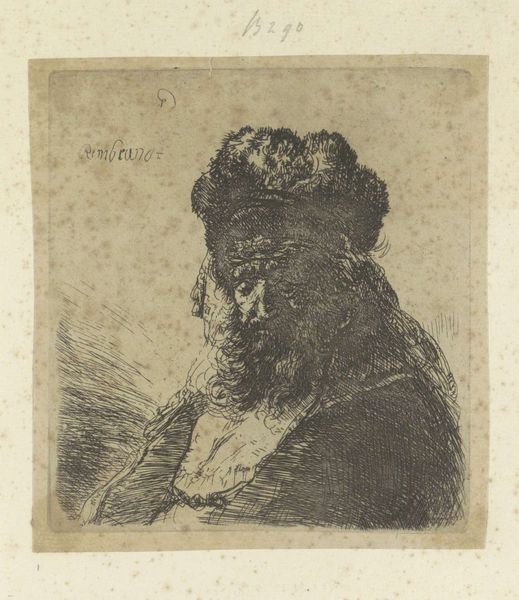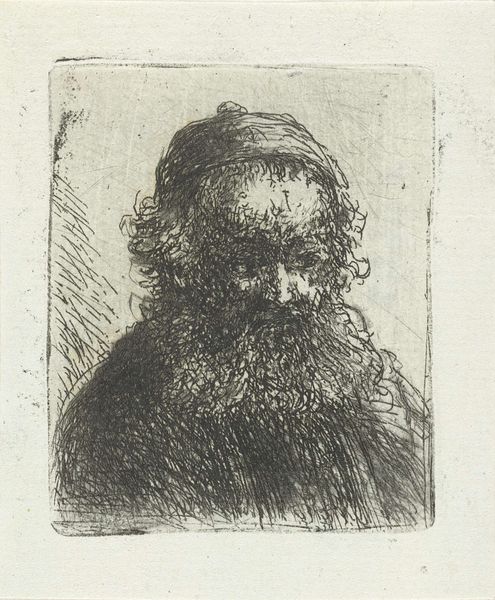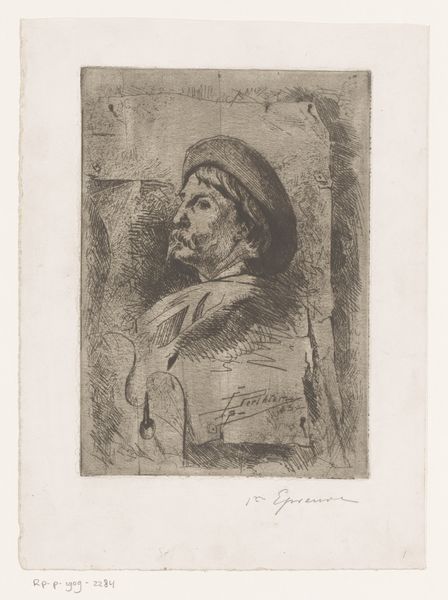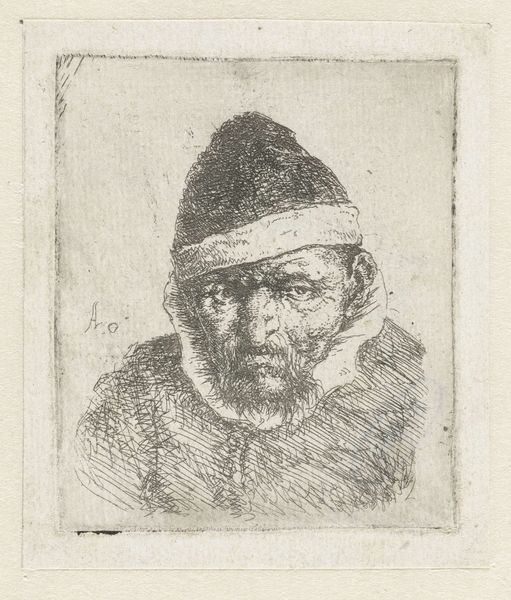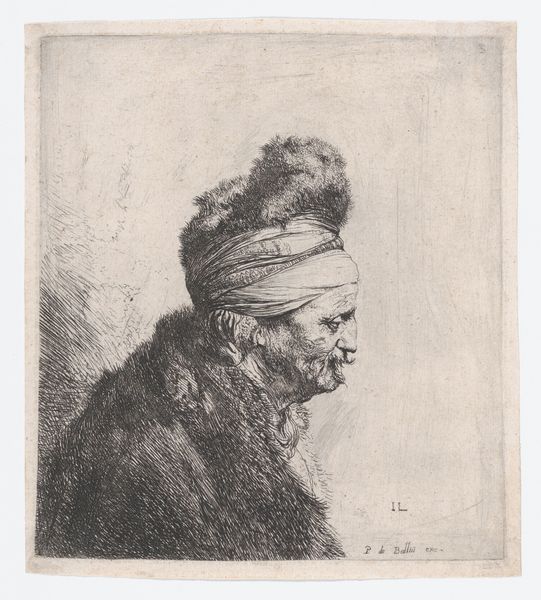
Sheet of studies of men's heads: man crying out, three quarters left: bust c. 1629
0:00
0:00
drawing, paper, ink
#
portrait
#
pencil drawn
#
drawing
#
baroque
#
pencil sketch
#
charcoal drawing
#
paper
#
ink
#
pencil drawing
Dimensions: height 25 mm, width 25 mm
Copyright: Rijks Museum: Open Domain
Editor: Here we have Rembrandt van Rijn's "Sheet of studies of men's heads: man crying out, three quarters left: bust," created around 1629, using ink on paper. It has a rather rough, immediate feel to it. What stands out to you most about this work? Curator: It's precisely that roughness which I find so compelling. Consider the social context. Paper in the 17th century was a valuable commodity. This sheet, likely a discarded proof or a practice piece, gives us access to Rembrandt's workshop practices. Editor: So you're focusing on the material itself, rather than just the image it conveys? Curator: Exactly! We see the labour of the artist—the repeated strokes of the pen, the layering of ink, the very texture of the paper speaking volumes. Think about the training involved, the cost of materials relative to other trades...it provides insight into the artist’s position within the Dutch Golden Age's economic structure. Editor: I hadn’t thought about the paper itself having such a story to tell. Does the quick, sketched nature suggest anything about its purpose? Curator: Absolutely. This wasn’t meant for display. It was a working document, a site of experimentation. Rembrandt wasn’t trying to create a finished "masterpiece;" he was exploring human emotion, honing his craft through material engagement. It challenges the idealized view we often have of artistic creation, doesn't it? Editor: It does. So it’s not just about the final artwork, but the entire process of its making that gives it meaning. I appreciate this different way of approaching it. Curator: Precisely. We shift our attention from aesthetic judgment to an investigation of labour and materials; we get a fuller understanding of Rembrandt's practice within its socio-economic reality.
Comments
No comments
Be the first to comment and join the conversation on the ultimate creative platform.


